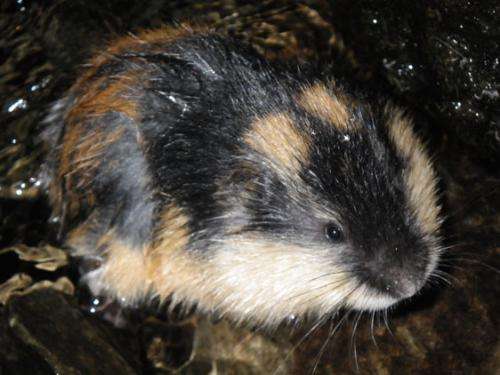The lemming is a species that will decline if the climate changes in the way climatologists predict. This lemming is a bit wet following a swim in the Vindel River in northern Sweden. Credit: Christer Nilsson
The climate changes depicted by climatologists up to the year 2080 will benefit most mammals that live in northern Europe's Arctic and sub-Arctic land areas today if they are able to reach their new climatic ranges. This is the conclusion drawn by ecologists at Umeå University in a recently published article in the journal Plos ONE.
The scientists Anouschka Hof, Roland Jansson, and Christer Nilsson of the Department of Ecology and Environmental Science at Umeå University investigated how future climate changes may come to impact mammals in northern Europe's Arctic and sub-Arctic land areas, excluding the Arctic seas and islands. These land masses are assumed to undergo major changes in climate, and their natural ecology is also regarded as especially susceptible to changes.
By modeling the distribution of species, the researchers have determined that the predicted climate changes up to the year 2080 will benefit most mammals that live in these areas today, with the exception of some specialists in cold climate, such as the Arctic fox and the lemming.
"This will be the case only on the condition that the species can reach the areas that take on the climate these animals are adapted to. We maintain that it is highly improbable that all mammals will be able to do so, owing partly to the increased fragmentation of their living environments caused by human beings. Such species will reduce the extent of their distribution instead," says Christer Nilsson, professor of landscape ecology.
The researchers also show that even if climate changes as such do not threaten the majority of Arctic and sub-Arctic mammals, changes in the species mix may do so, for instance because predators and their potential prey that previously did not live together may wind up in the same areas.
More information: Future Climate Change Will Favour Non-Specialist Mammals in the (Sub)Arctics, www.plosone.org/article/info%3Adoi%2F10.1371%2Fjournal.pone.0052574
Journal information: PLoS ONE
Provided by Umea University




















